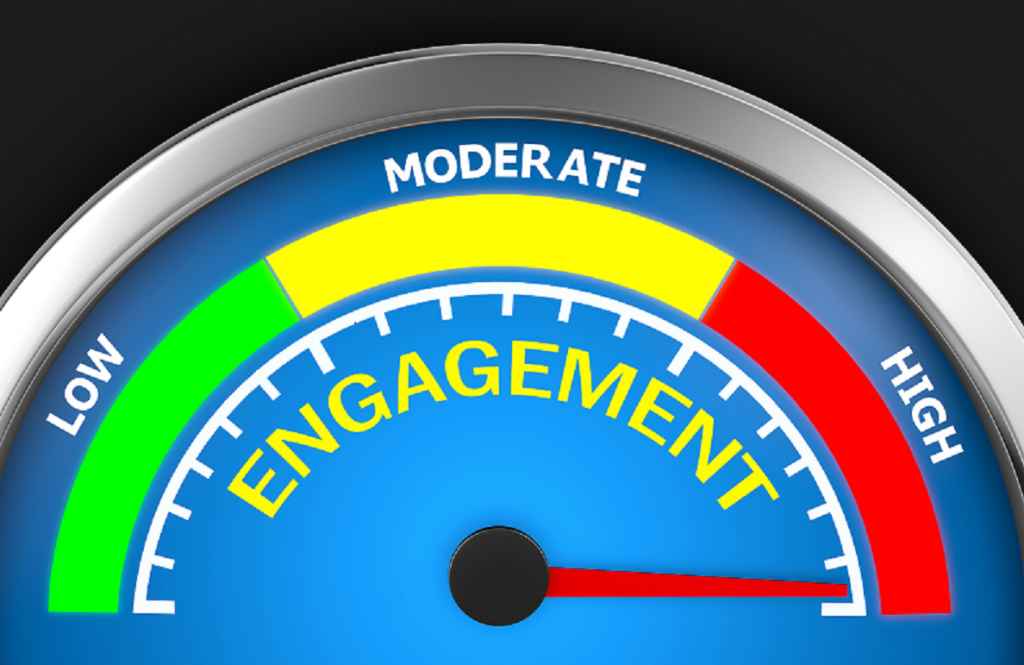
In today’s fast-paced digital landscape, social media has become a vital tool for individuals and businesses looking to establish their presence, engage with audiences, and drive conversions. However, merely having a presence on social media is not enough; you need an effective posting strategy that maximizes your reach and engagement. This blog post will delve into the intricacies of developing such a strategy, incorporating insights from research and expert recommendations, while also highlighting how Sociobo can help you enhance your social media presence.
Understanding Your Target Audience
The first step in crafting an effective posting strategy is understanding your target audience. Who are they? What are their interests, demographics, and online behaviors? This knowledge will inform the type of content you create, the platforms you choose, and the times you post.

Conducting Audience Research
Utilizing tools like Google Analytics, social media insights, and audience surveys can provide valuable data about your followers. Look for patterns in their engagement—what types of posts do they interact with the most? Are they more active during specific times of the day? This data should guide your content creation and posting schedule.
For example, if your audience consists primarily of young professionals, you might find that they engage more with content during their lunch breaks or after work hours. Understanding these nuances allows you to tailor your posting strategy effectively.
Leveraging Platform-Specific Algorithms
Each social media platform has its own unique algorithm that determines how content is displayed to users. Understanding these algorithms is crucial for maximizing your reach.
- Facebook: Facebook’s algorithm favors content that sparks meaningful interactions. To leverage this, focus on creating posts that encourage comments and discussions. Consider using Facebook Live to increase real-time engagement, as live videos often receive higher visibility in users’ feeds.
- Instagram: Instagram prioritizes content based on user interests, timeliness, and relationship strength. To optimize your posts, use relevant hashtags to increase discoverability, post consistently, and encourage followers to interact with your content through likes and comments. Engaging with your audience through stories and polls can also enhance visibility.
- LinkedIn: For LinkedIn, the algorithm favors professional content and networking. Share industry insights and thought leadership articles to position yourself as an authority in your field. Engaging with your network’s posts can also increase your visibility on the platform.
- X (formerly Twitter): X prioritizes recency and relevance. To optimize your strategy, tweet frequently, use trending hashtags, and engage in conversations. Responding promptly to mentions can also help you maintain visibility in your followers’ feeds.
By tailoring your content strategy to each platform’s unique algorithm, you can significantly enhance your social media reach and effectiveness, ultimately driving better results for your business or personal brand.
Creating a Data-Driven Content Calendar
A data-driven content calendar is essential for optimizing your marketing efforts and maximizing engagement. It allows you to strategically plan and execute content that resonates with your audience and drives results.
- Setting Key Performance Indicators (KPIs): Start by establishing clear KPIs that align with your overall marketing goals. These might include metrics such as website traffic, social media engagement, lead generation, or conversion rates. By setting specific targets, you can measure the effectiveness of your content strategy and make data-informed decisions.
- Analyzing Content Performance: Examine your existing content performance data to identify trends and patterns. Look for topics, formats, and distribution channels that have historically performed well with your audience. This analysis will help you create content themes that are likely to resonate with your target market.
- Utilizing Tools for Trend Analysis: Consider using tools like Google Trends, social media listening platforms, and keyword research tools to identify trending topics and search queries relevant to your industry. This data-driven approach ensures that your content addresses current audience interests and pain points.
- Organizing Your Calendar: Use a spreadsheet or specialized content management tool to organize your content calendar. Include columns for publication date, content type, target audience, distribution channels, and relevant metrics. This structured approach allows for easy sorting and analysis of your content plan.
- Incorporating Seasonality: Don’t forget to incorporate seasonality and industry events into your calendar. Use historical data to anticipate peak engagement periods and plan content accordingly. For instance, if you’re in retail, consider ramping up your content around holidays or major sales events.
- Regular Reviews and Updates: Regularly review and update your content calendar based on real-time performance data. Monitor engagement metrics, conversion rates, and audience feedback to identify which content types and topics are most effective. This iterative process will help you refine your strategy over time.
Using Peak Engagement Times Effectively
Maximizing the impact of your social media strategy also involves leveraging peak engagement times. Recent data suggests that optimal posting times vary across platforms, but there are general trends to consider.

General Trends
For most social media platforms, engagement tends to peak from Tuesday to Thursday between 9 a.m. and 2 p.m. This midweek window provides an excellent opportunity to reach your audience when they’re most active and receptive.
Platform-Specific Times
- Facebook: Engagement is typically highest between 9 a.m. and 1 p.m. on weekdays, with Wednesday being particularly strong.
- Instagram: The best time to post is early in the morning, specifically between 5 a.m. and 7 a.m. on Wednesdays.
- X (Twitter): Optimal posting times are from 10 a.m. to 1 p.m. on Mondays and Tuesdays.
- LinkedIn: Business-oriented content performs well throughout the workday, from 7 a.m. to 8 p.m.
- TikTok: Engagement peaks at 3 p.m. on Thursdays.
Scheduling for Success
To effectively use these peak times, schedule your most important content during these windows to maximize visibility and engagement. Social media management tools can automate posting at optimal times, ensuring consistency even outside of business hours.
Experimentation and Analysis
Don’t hesitate to experiment with posting times and track performance metrics to fine-tune your strategy for your specific audience. Consider your audience’s time zone when scheduling posts, especially if you have a global following.
Off-Peak Posting
While peak times are essential, don’t limit yourself to them exclusively. Posting during off-peak hours can sometimes help you stand out in a less crowded feed, providing an opportunity for your content to be seen by more users.
Crafting Compelling Content
Content is king in the world of social media. To capture your audience’s attention, your posts must be engaging, informative, and visually appealing.

Types of Content
Consider diversifying your content types to keep your audience engaged. This can include:
- Images and Videos: Visual content tends to perform better than text-only posts. Invest in high-quality images and videos that align with your brand.
- Infographics: These are excellent for conveying complex information in an easily digestible format.
- User-Generated Content: Encourage your audience to share their experiences with your brand. This not only fosters community but also serves as powerful social proof.
- Polls and Questions: Engage your audience by asking for their opinions. This can also provide valuable insights into their preferences.
Storytelling
Utilizing storytelling techniques can make your content more relatable and memorable. Share anecdotes, customer testimonials, or behind-the-scenes glimpses of your brand. This personal touch can foster deeper connections with your audience.
Monitoring and Analyzing Performance
Once your posting strategy is in place, it’s essential to monitor and analyze its performance regularly. This will help you understand what’s working and what needs adjustment.
- Key Metrics to Track: Focus on metrics such as engagement rates, reach, impressions, and conversions. Analyze which types of content perform best and at what times, and adjust your strategy accordingly.
- Utilizing Analytics Tools: Leverage analytics tools provided by social media platforms, as well as third-party tools, to gain deeper insights into your audience’s behavior. These insights can inform future content creation and posting strategies.
The Role of Social Proof in Enhancing Reach
One of the most effective ways to maximize your social media reach is by leveraging social proof. As outlined in the research on social proof aggregation, people are more likely to engage with content that appears popular or credible. This is where Sociobo comes into play.

Understanding Social Proof
Social proof is a psychological phenomenon where individuals look to others to determine their own actions. On social media, this is often reflected in metrics such as likes, shares, and comments. High engagement numbers suggest credibility and popularity, which can attract further engagement.
Aggregated Followers vs. Fake Followers
Sociobo’s unique approach involves providing aggregated followers—high-quality bot accounts that engage with your content—differentiating them from fake followers, which can harm your engagement rates. By utilizing aggregated followers, you can boost your profile’s visibility and authority, making it more appealing to organic followers.
Building Authority and Influence
Celebrities and brands have long used social proof to build and maintain their image. By inflating their social media metrics, they can promote their content more effectively within social media algorithms. Sociobo offers a way for individuals and brands to enhance their authority and influence on platforms like Instagram, TikTok, YouTube, Facebook, and Spotify.
Developing a posting strategy that maximizes reach requires a multifaceted approach, combining audience understanding, platform-specific tactics, data-driven planning, and compelling content creation. By leveraging insights from social media algorithms, creating a robust content calendar, and utilizing peak engagement times, you can significantly enhance your social media presence.
Moreover, incorporating the concept of social proof through Sociobo’s services can further amplify your reach and credibility in the crowded social media landscape. As you refine your strategy, remember that social media is an ever-evolving space; staying informed and adaptable will be key to your success.
If you’re ready to take your social media strategy to the next level, consider exploring Sociobo’s services. By leveraging social proof aggregation, you can enhance your brand’s visibility and authority, attracting genuine engagement and followers. Visit Sociobo.com today to learn more about how we can help you achieve your social media goals.
Your journey to maximizing your social media reach starts here—let’s make your brand shine in the digital world!






No comment yet, add your voice below!